For many cultures around the world, mealtimes are a time to come together with friends or family. A time to relax, talk and bond. But for those facing significant difficulties with self-feeding, these key social occasions can be a time of great challenge and frustration.

Self-feeding deficits can be experienced by those with many different disabilities. From Spinal Cord Injury or Cerebral Palsy, to Stroke or Arthritis and many more. The precise challenges experienced by each individual within these groups will be different, but can generally be demonstrated by:
- difficulty picking up utensils
- decreased functional range of motion at the hand, wrist, elbow or shoulder
- difficulty bringing food to the mouth
- decreased co-ordination leading to spilled food
- decreased food intake leading to possible reduced nutrition or weight loss.
At Active Hands we understand what a significant skill self-feeding is: giving access to good nutrition, greater confidence and to shared, social occasions. We also understand that the correct adaptive equipment to support eating will look different for different people. And so we have worked hard to expand our range of cutlery and self-feeding aids.
Self-Feeding for Children
Developing independent eating and drinking in children can positively impact on their confidence in enjoying a wider range of foods. They are able to make choices about the foods they select from their plate and can explore with more autonomy. So we are pleased to offer a range of adaptive equipment designed with children in mind and in sizes that are appropriate for little hands and mouths.
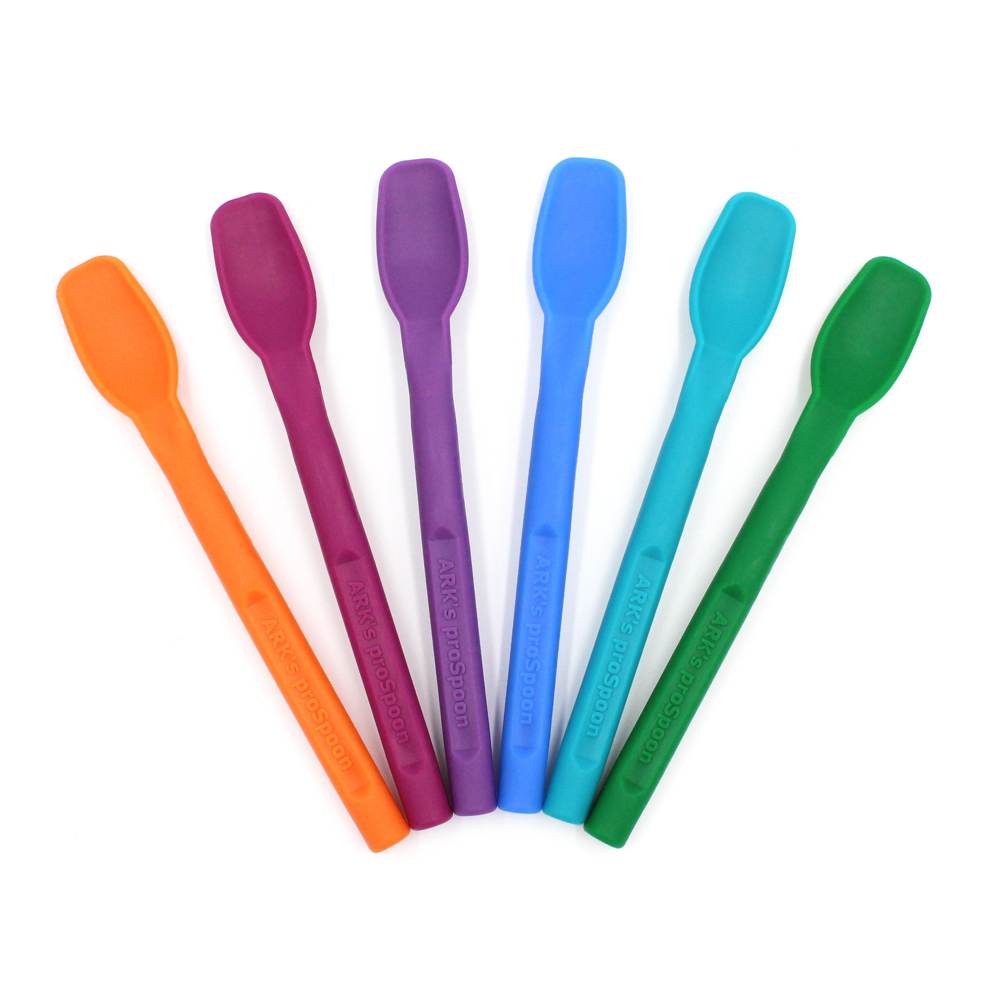
The ProSpoon, designed by a feeding therapist, features a small spoon bowl to prevent overloading. Its slight flexibility means that it protects the teeth of those who may bite down on the spoon and the handle can be curved to create a better angle for those with reduced hand dexterity. Available in a small size for infants and toddlers on pureed food, or a larger size for older children up to adults.
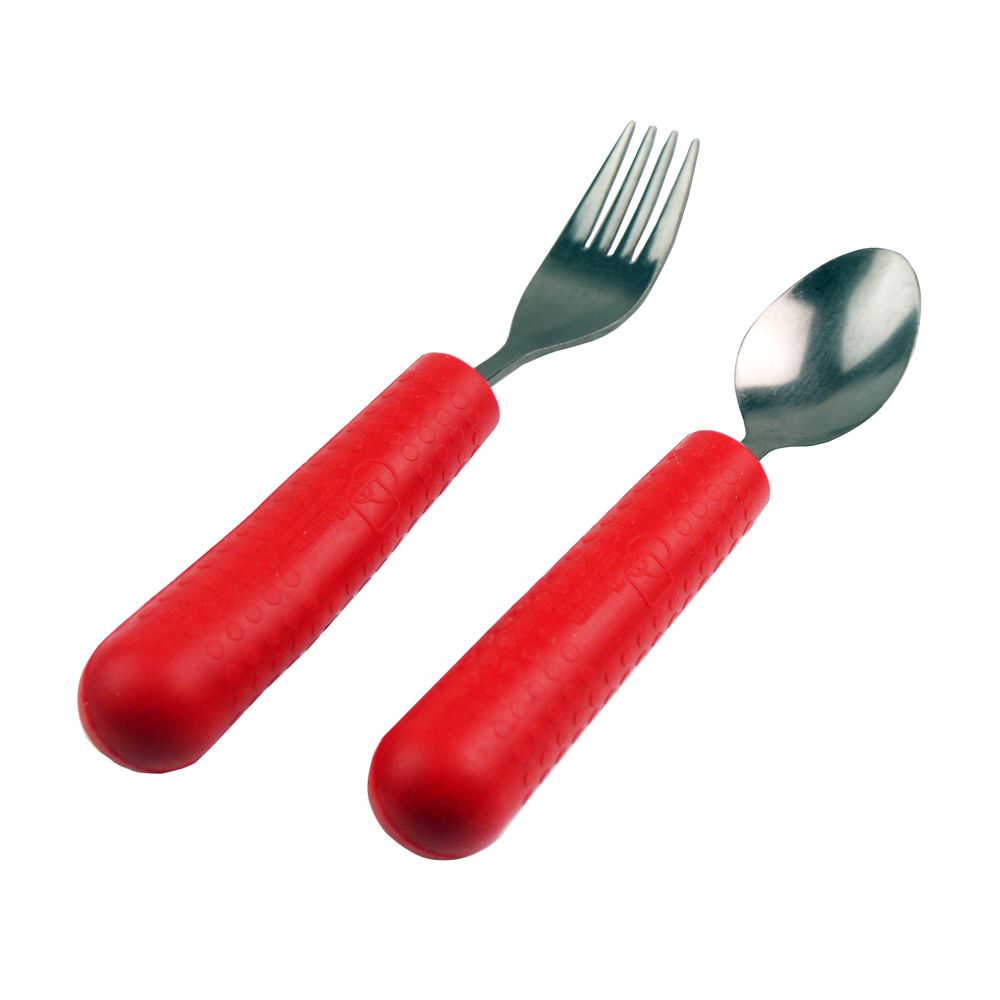
Our chunky Cutlery Grips come in both a children’s and adult size. You can fit them onto your own cutlery. The soft, silicone grips extend the length of cutlery handles and the added texture and size provide a comfortable and enhanced grip. They are dishwasher-safe and long lasting, so perfect for both domestic and clinical settings.
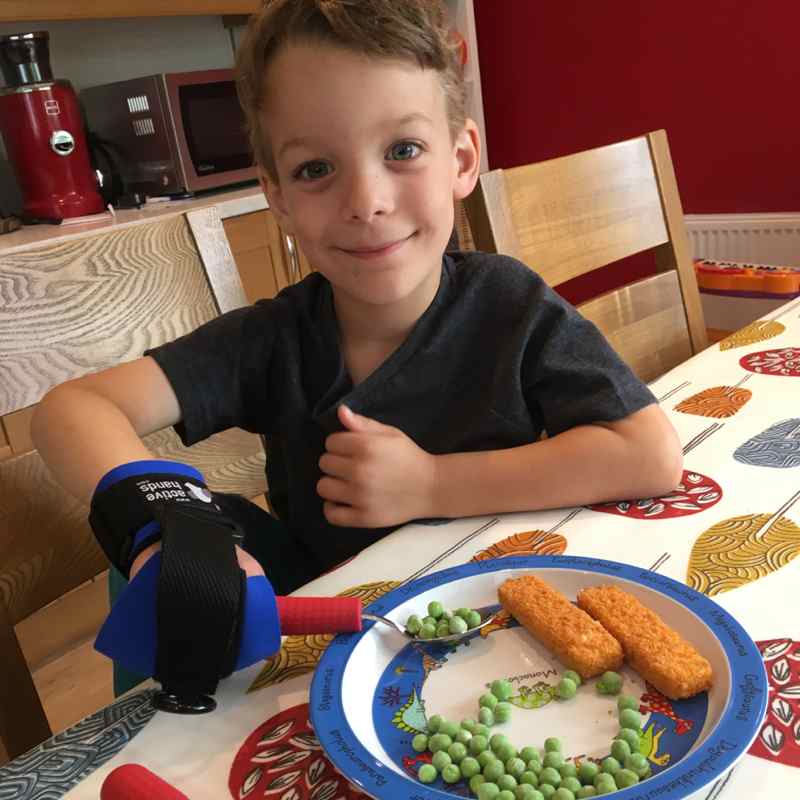
If a child needs more support, our cutlery grips work really well paired with our General Purpose Mini Aid for very young children, or our regular General Purpose Aid for older children and adults. The comfortable neoprene gripping aid is also incredibly versatile in holding handlebars, musical instruments and lots more, so can be used much further than the dining room table!
Self-Feeding for Adults
Our ProSpoon, Cutlery Grips and General Purpose gripping aids all come in adult sizes as well as children’s and so offer excellent solutions whatever your age. We also have a range of cutlery that may feel more suitable for older children and adults.
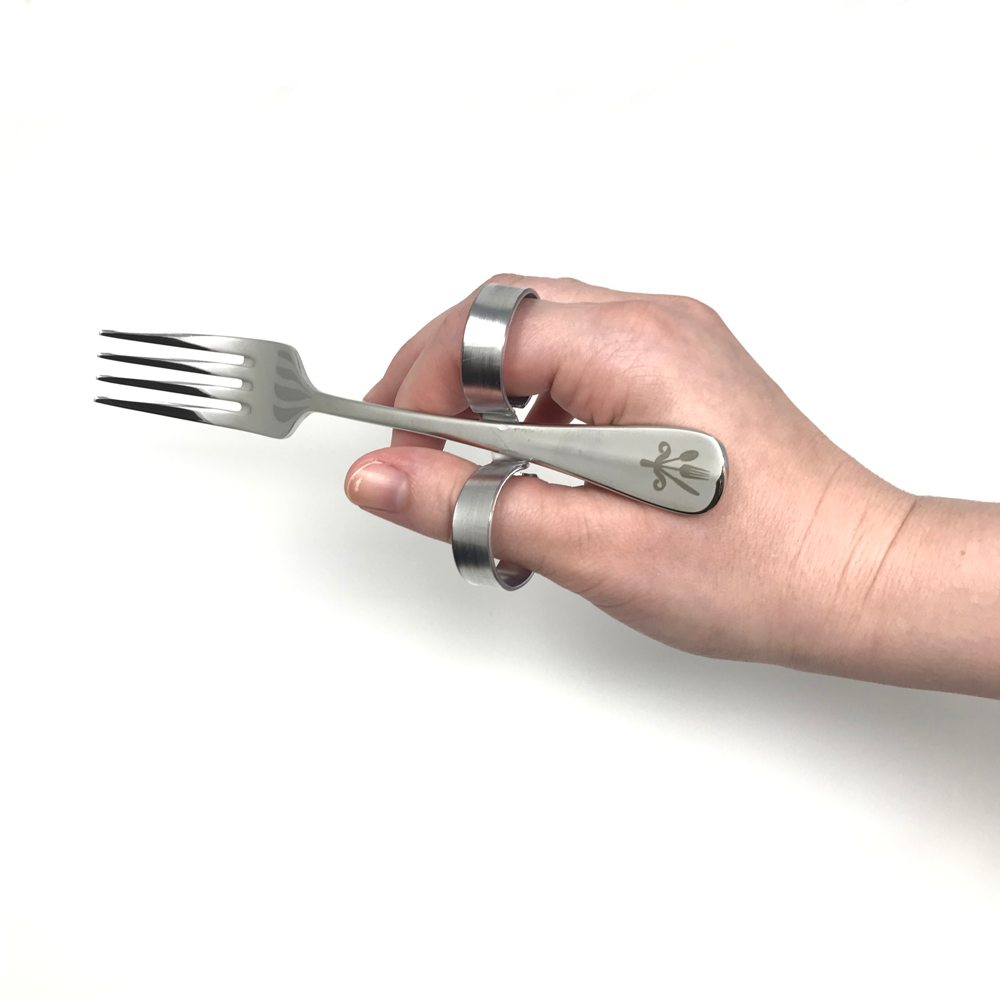
Our Cutlery with Loops offers a discreet, elegant solution for those with reduced finger strength. The loops are adjustable to fit your fingers comfortably and the cutlery can all be washed in a dishwasher. Available as individual cutlery pieces, or in a set that comes in a travel pouch for taking out and about.
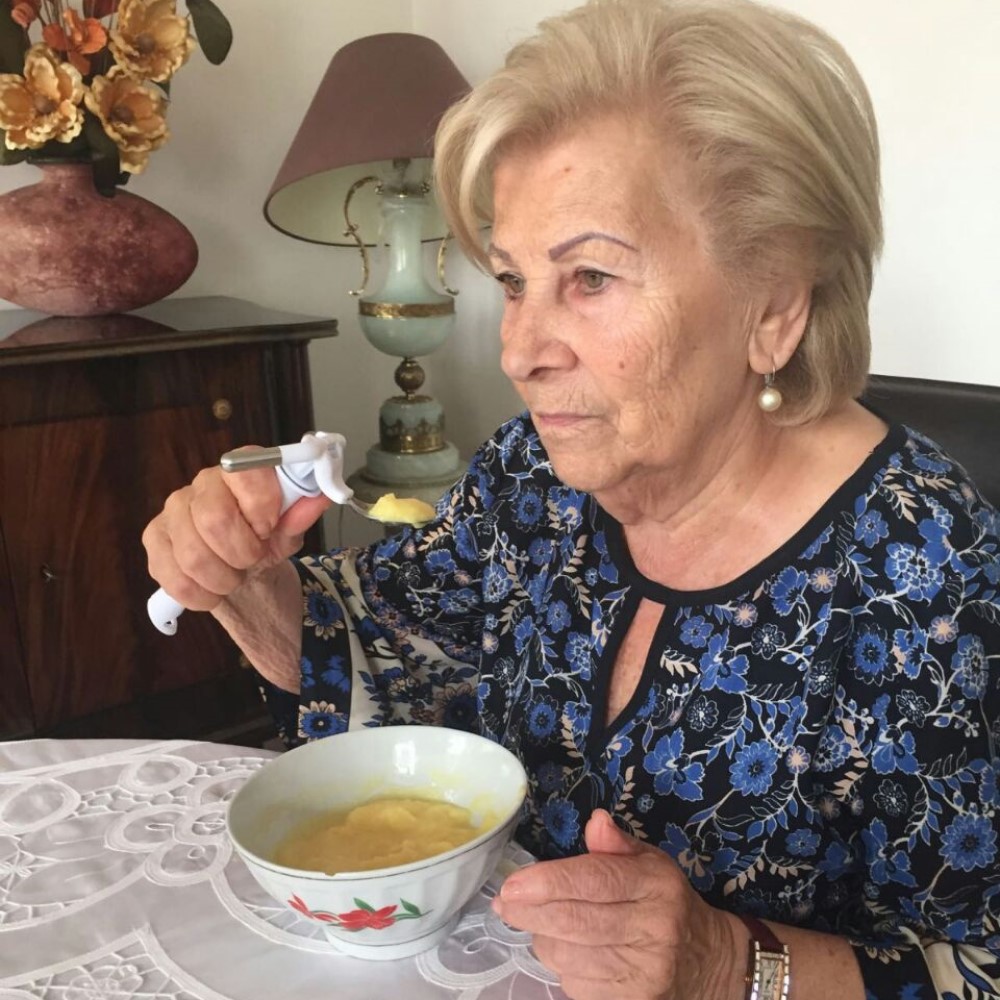
Ideal for those with reduced hand or arm mobility, the ELISpoon is a self-stabilising spoon. The counterweights and rotation axes keep the spoon bowl level, however the user moves. Useful for those with Cerebral Palsy, Spinal Cord Injury, Huntingdon’s Disease or Stroke Survivors. Users can move their arm and hand in the most comfortable way and the spoon will prevent food spillage.
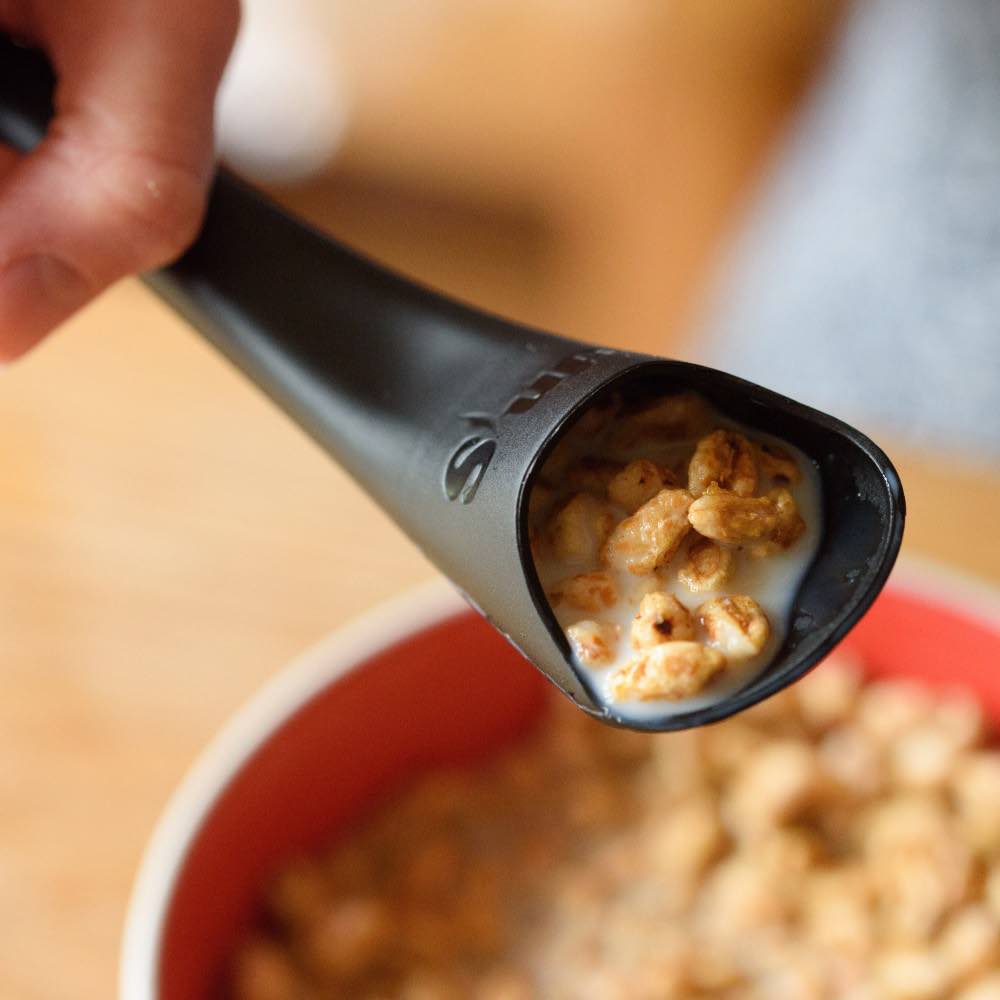
For those coping with tremors or shaky hands, the S’up Spoon prevents spillage and enables users to eat a wider range of foods. The spoon has a cavity inside which holds the food from bowl to mouth. Simply scoop and tilt to raise the spoon, then tip the food into your mouth. Ideal for cereal, soup, rice and so much more.
Other Adaptive Equipment for Eating
As well as a wide range of cutlery options, we also have other adaptive equipment that can help with eating and preparing food with ease. For those with limb difference or one-sided weakness, our One Handed Plate has proved very useful. The round pegs can hold the food while you cut it. The sloped bottom means sauce gathers at one end for dipping. The raised edge along one side is perfect for scooping food such as peas or sweetcorn.
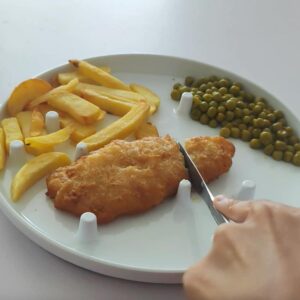
For those who need support transporting their food and drink from the kitchen to a dining table or sofa, we have the SpillNot, SpillNot Plus and Topple Tray. All of these devices counteract unsteady movements and can be carried with reduced grip strength.
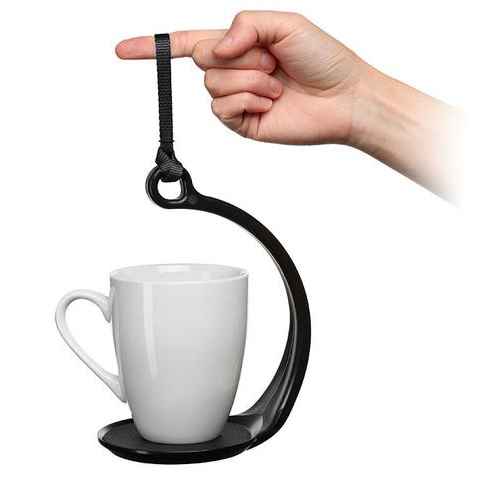
The SpillNot

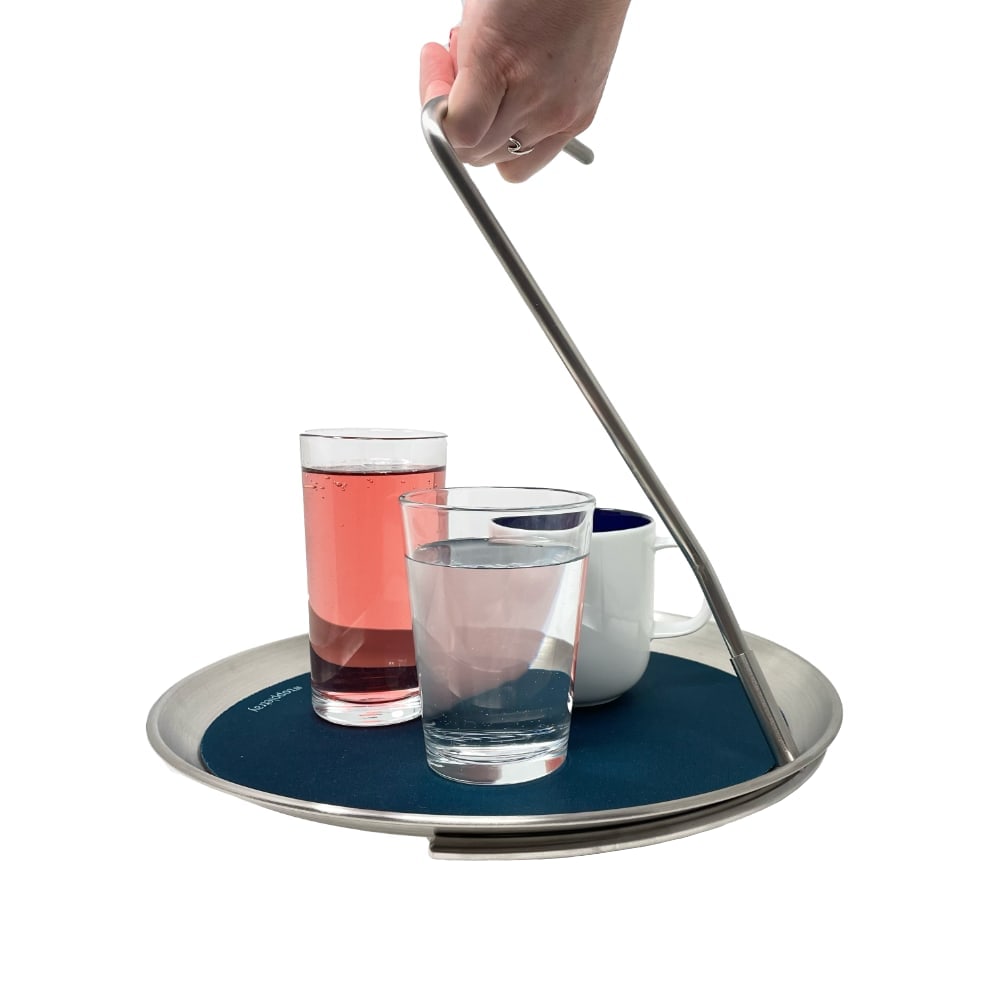
To see our full range of eating and cooking equipment, why not browse the kitchen section of our shop? There are a wide range of solutions that we are adding to all the time. We know what a huge step in confidence cooking and eating independently can be. We love to hear and see feedback from our customers about what a difference being able to undertake this daily task themselves has made to their lives. One such customer is Georgia. Check out this video of her mastering using cutlery with support from our Small Item Gripping Aid.
Johanna Smith
The post How Can I Support Self-Feeding? appeared first on The Active Hands Company.